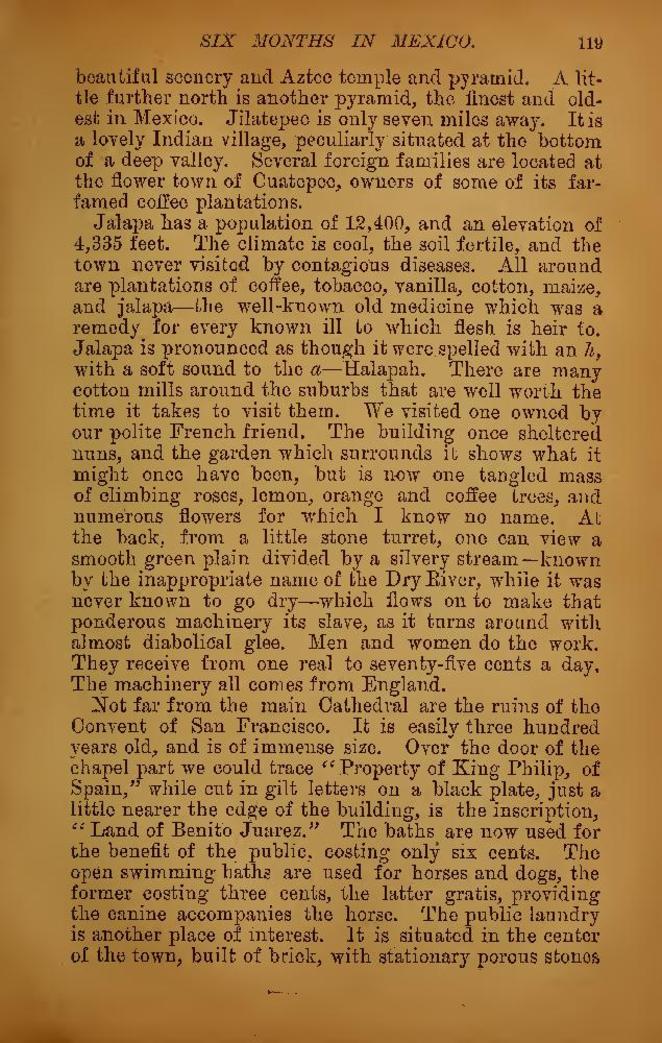beautiful scenery and Aztec temple and pyramid. A little further north is another pyramid, the finest and oldest in Mexico. Jilatepec is only seven miles away. It is a lovely Indian village, peculiarly situated at the bottom of a deep valley. Several foreign families are located at the flower town of Cuatepec, owners of some of its far-famed coffee plantations.
Jalapa has a population of 12,400, and an elevation of 4,335 feet. The climate is cool, the soil fertile, and the town never visited by contagious diseases. All around are plantations of coffee, tobacco, vanilla, cotton, maize, and—jalapa the well-known old medicine which was a remedy for every known ill to which flesh is heir to. Jalapa is pronounced as though it were spelled with an h, with a soft sound to the a—Halapah. There are many cotton mills around the suburbs that are well worth the time it takes to visit them. We visited one owned by our polite French friend. The building once sheltered nuns, and the garden which surrounds it shows what it might once have been, but is now one tangled mass of climbing roses, lemon, orange and coffee trees, and numerous flowers for which I know no name. At the back, from a little stone turret, one can view a smooth green plain divided by a silvery stream—known by the inappropriate name of the Dry River, while it was never known to go dry—which flows on to make that ponderous machinery its slave, as it turns around with almost diabolical glee. Men and women do the work. They receive from one real to seventy-five cents a day. The machinery all comes from England.
Not far from the main Cathedral are the ruins of the Convent of San Francisco. It is easily three hundred years old, and is of immense size. Over the door of the chapel part we could trace "Property of King Philip, of Spain," while cut in gilt letters on a black plate, just a little nearer the edge of the building, is the inscription, "Land of Benito Juarez." The baths are now used for the benefit of the public, costing only six cents. The open swimming baths are used for horses and dogs, the former costing three cents, the latter gratis, providing the canine accompanies the horse. The public laundry is another place of interest. It is situated in the center of the town, built of brick, with stationary porous stones
